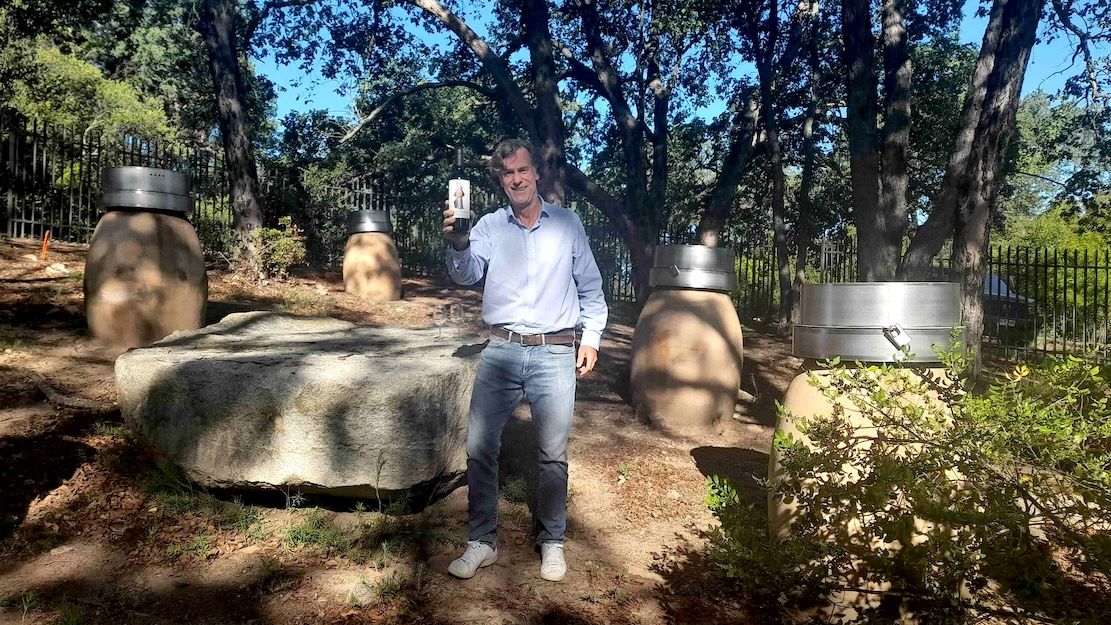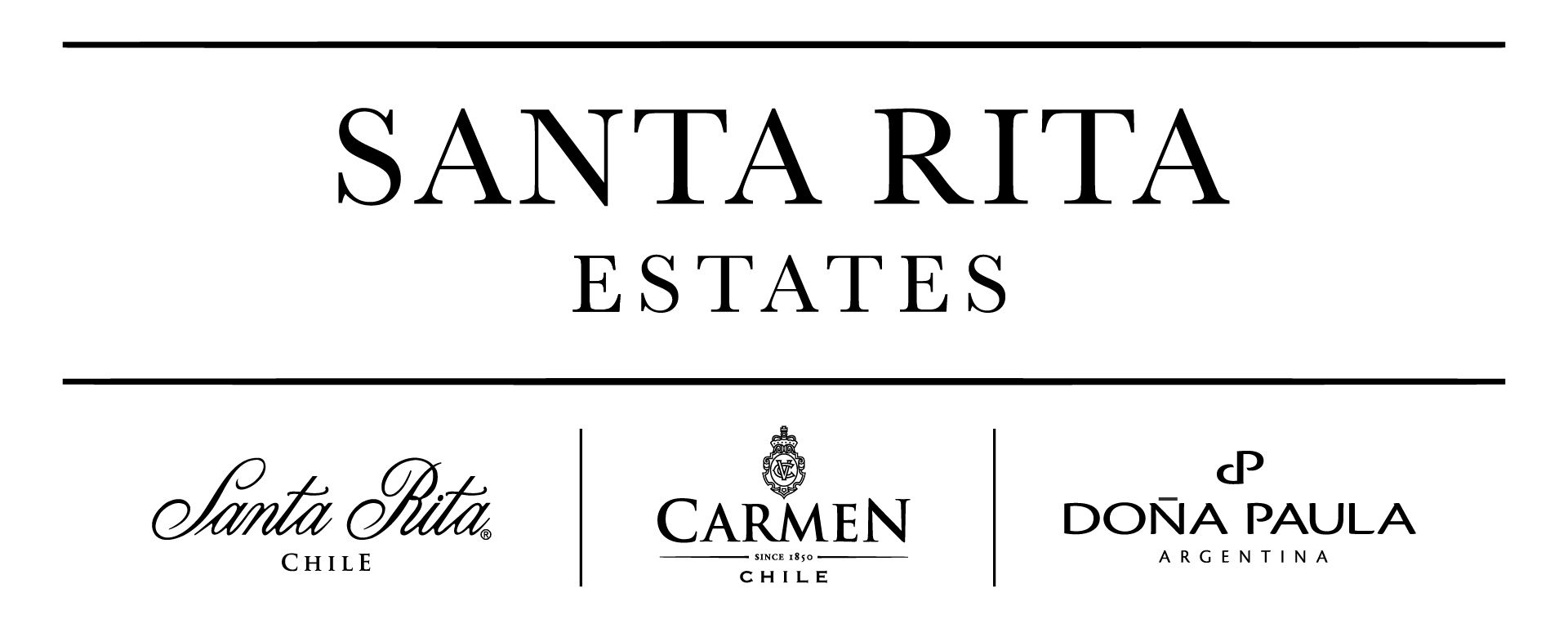Cristián Vallejo approached the entrance to the locked forested enclosure with deference, as if respectful of a burial site within. Which in a way it was, though not with any human connection. The Viña VIK winemaker spoke in almost reverential tones, as if paying homage to the location – high up in the coastal range between the Andes and the Pacific at 1,000 metres above sea-level.

Chile’s Millahue Valley - the site of this most extraordinary outdoor 'cellar'
“What happens if we make nature take care of our wines? – that was the primary idea,” he pronounced while unlocking the gate to the tree-ringed enclosure. “What if we make the beautiful forest be the guardian of our wine? That was the idea I had at the beginning in 2023. And the family said yes, let’s do it.”
Vallejo was referring to Alexander and Carrie Vik from Norway, the proactive owners of the stunning 4,400-hectare Cachapoal Valley estate near Millahue, which houses not just one of Chile’s top wineries but also one of its most iconic hotels.
Vallejo’s idea was all part of producing what he terms a ‘circular’ wine, whereby it is made “only within the resources available in our terroir.” Apart from harvesting flowers from the estate and adding their yeast strains to musts for fermentation, that also means using amphorae made from clay dug on the estate, and wood from dead Chilean oak trees on it.
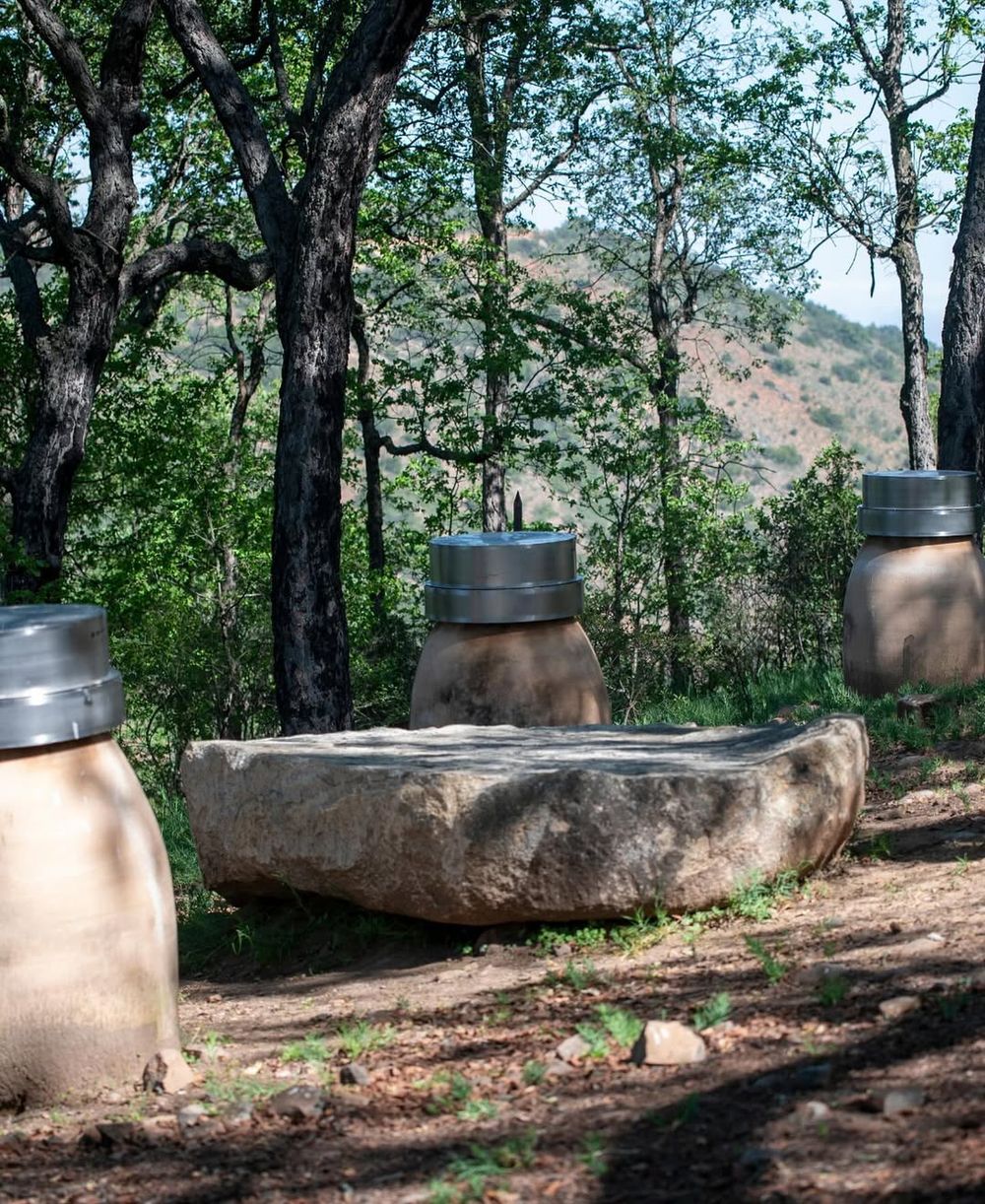
There is a natural energy to the site says Vallejo
“Our used and new French oak barrels are toasted using wood from centennial oak trees that have completed their life cycle and fallen on our estate,” he explained. “The resulting barrels have been personalised in our own cooperage and give our wines the flavour of our terroir. Chilean oak trees are very mild in terms of the vanilla, coconut flavour – even less than the French oak.”
The last piece in the jigsaw was transporting the amphorae into the forested enclosure where, as Vallejo asserted, “we have this natural energy like Stonehenge and we connect the wine with the stars, the moon and the sun.” The wine spends eight months in the amphorae before being racked off – in another nod to Stonehenge – on the day of the southern hemisphere’s summer solstice, December 21.
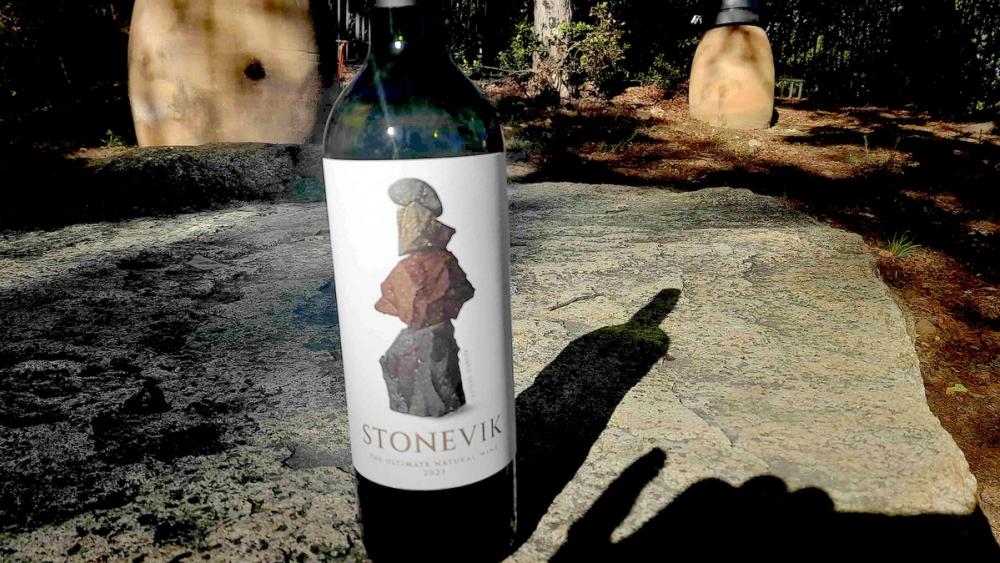
The perceived connection with Stonehenge was the reason the new wine was called Stone VIK. How though, I asked Vallejo, did they select the site for the amphorae?
“We found a very special spot where the oak trees were forming a circle but we needed to know why, so we brought a geologist in. He identified the intersection of a natural fault and a water vein. That crossing creates what is called magnetic resonance."
After the geologist came an astronomer.
"He gave us the information where to place the amphorae – half of them buried, half not," Vallejo continued. "This wine – from a vineyard that is organically and sustainably farmed – is now 100% connected with nature. The trees communicate with themselves and form a community. They are connected through the roots, and as the amphorae are in the middle of the forest and are touching the roots, they became part of this community. So this wine is connected with the soil, with the wind, with the sun, with the moon, with the forests.”
Buoyed by the professionals' findings and his own convictions, Vallejo brought in a Chilean shaman, or witch doctor.
“They are a native person who lives in the middle of the forest and has this connection with it,” he revealed. “We didn't tell him anything but when he came into this ring, he stopped right there and said, ‘This is the energy of mother earth that is protecting this forest. To activate that energy we need to place something heavy here.’ ” A giant granitic rock from the estate was, therefore, selected and transported to the site and hauled into the exact spot the shaman recommended.
Soon after, in April 2023, the amphorae were filled with the first vintage of Stone VIK – predominantly Cabernet Franc (77%), with Cabernet Sauvignon making up 18% and Carménère 5%. The varietals were blended at the winery after a month in barrel and the completion of malolactic fermentation. The positioning of the amphorae was, though, considered very important by Vallejo.
“This giant granitic rock is the point of central energy where the magnetic resonance starts,” he explained. “Each amphora had a different distance from the energy point. That means that each one receives different energy and therefore different vibration. And thanks to this, we found when we tasted that each amphora has a different flavour. So it’s all about the energy of the place.”

Cristián Vallejo and Geoffrey Dean (l-r)taste Stone VIK in
It was time now to taste the first vintage of Stone VIK, a bottle of which Vallejo had brought with him.
“You see how it’s round and soft, very energetic with beautiful perfume, mouthfeel and fruit,” he purred. “The colour is amazing, very intense; it’s juicy and vibrant but it’s elegant and mineral. It hasn’t been in oak but you can feel the concentration of the tannins. They are round and soft.”
For those keen for some technical reasoning to go with his more philosophical beliefs, Vallejo made some key observations.
“The explanation for soft tannins is that micro-oxygenation is faster as the pores in amphorae are bigger and polymerisation is faster,” he said. “Second, because of the shape of the amphorae, the wine when circulating is moving faster as pressure is less at this altitude of 1,000 metres. Thirdly, this place is naturally vibrating because of this fault. Some wineries play music because of the vibration, but this is natural vibration. That explains why the wine is so round and soft, even though only bottled 10 months after the vintage.”
While Stone VIK 2023 (500 cases of which were made with around 30 going to the UK), is the winery’s most expensive label at US$180 retail, the flagship Vik wine ($160), is put through a very different élevage (24-26 months in oak, 50% new and 50% second fill). “Stone VIK looks like a young wine but tastes like the tannins have been aged for two years,” Vallejo mused.
Despite the temptation to increase the number of amphorae, he will not do so.
“We will keep just 14,” he said. “This is so special that we want to keep it like that. If we put one where the water table is, the water will run to another place, and the energy of the place will change. You feel the wind here, it is amazing. It can be 28°C here in summer but because of the wind and the forest, it is never more than 23°C. So the amphorae don’t get too hot, and similarly in winter when it can be minus 2°C, it never gets below 5°C in the amphorae as the wine is always moving.”
He added that, during the four months of the year when no Stone VIK is in the amphorae, they are filled with rosé to stop them cracking.
The rosé is one of nine Viña VIK labels produced from the estate’s 320 hectares of vines.
Catering for the wine tourist

As outstanding as the VIK portfolio is the 'Vik Chile' Hotel, with its titanium roof, stupendous 360-degree views and celebrated culinary garden. Its 22 bedrooms are individually decorated with multiple artworks, notably by one of Chile’s most famous artists, Gonzalo Cienfuegos, and have floor-to-ceiling windows. Riding out through the vines on horseback, or having a spa treatment, is one of the many extras the hotel offers. The cuisine matches both the excellence of the wines and the imagination of the winery design – underground with a water-cooled roof.
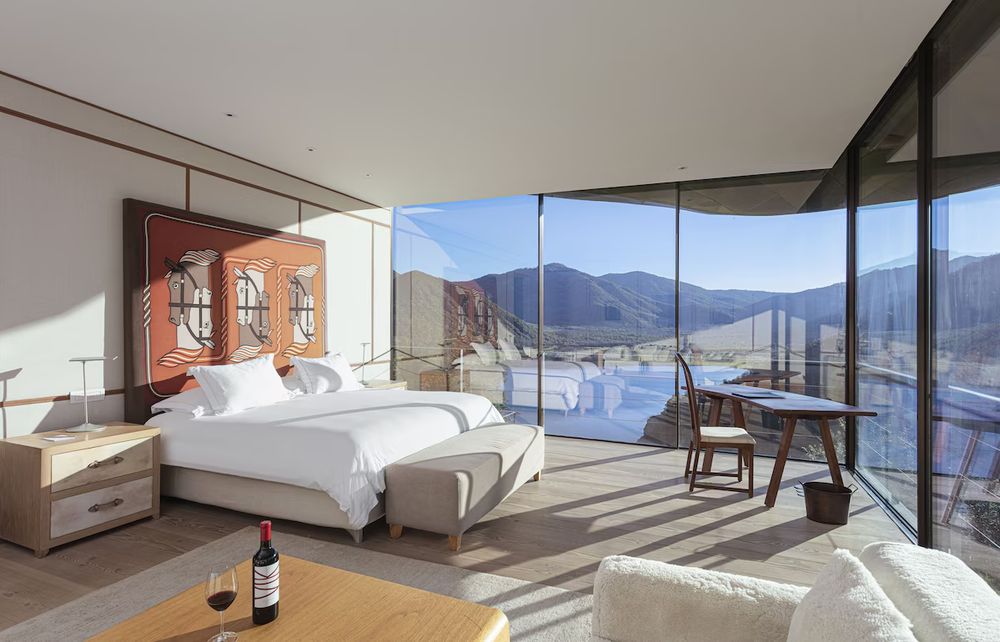
In complete contrast to the Vik Hotel’s go-ahead modernity is another special place for the wine tourist to stay, Hotel Casa Real, just south of Santiago. Lying within the Santa Rita estate in Maipo Valley, it is a beautiful old manor house with colonial architecture, built in the late nineteenth century and only converted to a hotel in the 1990s. It is set in 40 hectares of parkland, with extensive gardens through which you walk to get to the impressive cellar door for both the Santa Rita and Carmen wines. The latter represents the oldest wine brand in Chile (1850). Right next door is the Andean Museum which, with its 3,000 archaeological and ethnographic pieces, is one of the most important private collections in Chile.
Those wine tourists wanting a delightful bed-and-breakfast option in the Maipo Valley should look no further than Vinos LOF, a few miles from Hotel Casa Real. This is the boutique winery belonging to Perez Cruz winemaker, Germán Lyon and his wife Francisca. The tastefully-furnished bedroom in the winery building is so close to their three hectares of vines that you open your French windows and walk straight into them. You can have a tasting of the two excellent Vinos LOF labels - a single varietal Syrah and a single varietal Cabernet Sauvignon.
If you head north of Santiago to the spectacular Elqui Valley, home to Chile’s second highest vineyards, you get the added bonus of one of the best locations in the world to stargaze multiple constellations and the Milky Way. The place to base yourself is Vicuña, a charming little town which is within striking distance of the valley’s wineries, Pisco distilleries and a number of observatories. And a particularly nice hotel there is Solar Madariaga, a converted manor house whose fine restaurant lists only wines from Elqui Valley wineries.
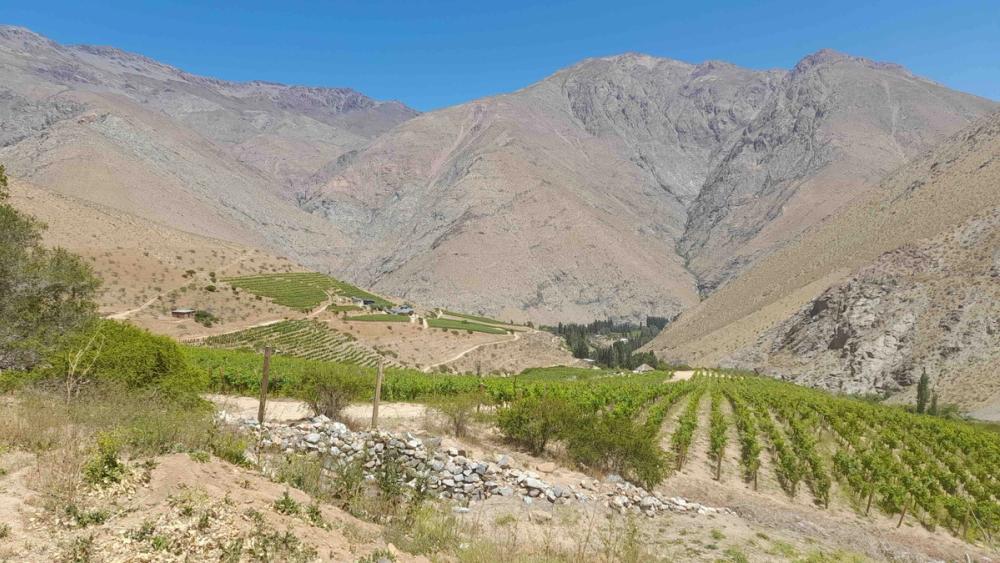
Viñedos de Alcohuaz uses no electricity or pumps
These include two of the most dramatically beautiful wineries in all Chile: Viñedos de Alcohuaz and Viña Primavento. The former’s highest vineyard of 2208m is eclipsed for altitude only by a small cooperative in the far north at 2,450m. Viñedos de Alcohuaz, named after the nearby village, is extraordinary in that it uses no electricity or pumps, with all its red grapes being foot-trodden in lagares before being matured in concrete eggs, foudres, stainless steel barrels and qvevris. The wines have great personality, with higher radiation leading to thicker skins and with it massive concentration. An ultra wide diurnal range (an average of 20°C in the ripening period) helps provide higher natural acidity and fresher aromas.
Lower down the Elqui Valley, ten kilometres east of Vicuña, but in no less stunning a setting, can be found Primavento. The Porfiri family have been on the property for over a hundred years, but only went into wine production ten years ago after discovering a pocket of limestone on which they planted Syrah, Mourvedre and Malbec vines. A new cellar door with magnificent views is opening in mid-2025, and will be a superb location to taste its characterful boutique wines, made by Giacomo Porfiri and his wife Dani. They, along with the winemaking duo at Viñedos de Alcohuaz, Marcelo Retamal and Rosario Fillol, are a brilliant advert for the Elqui Valley, while further south in the Cachapoal Valley, Vallejo’s reputation as a trailblazer grows inexorably.
